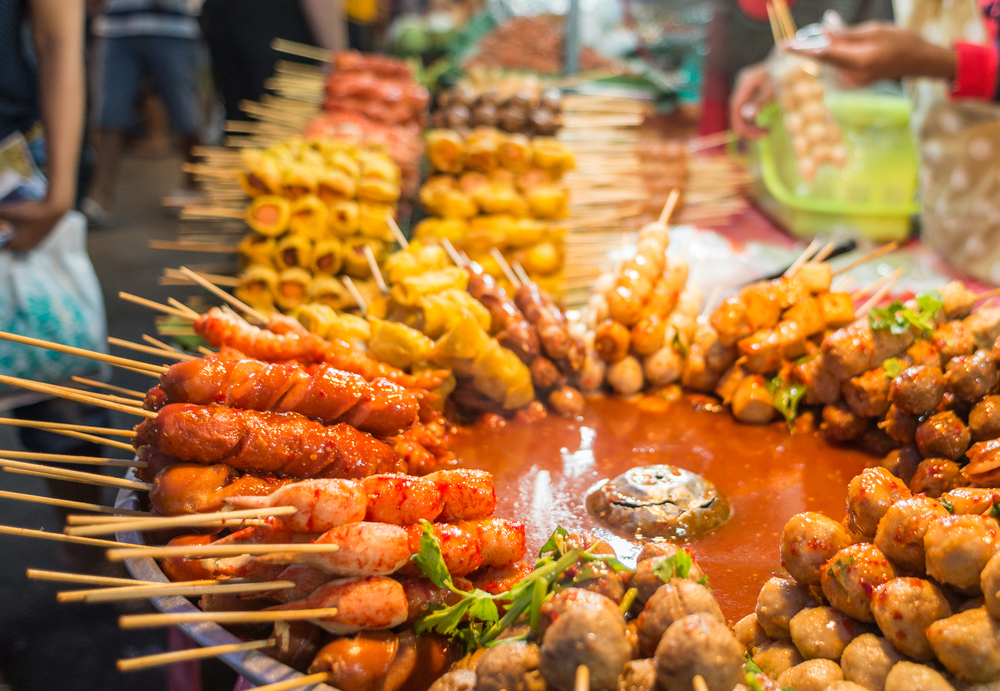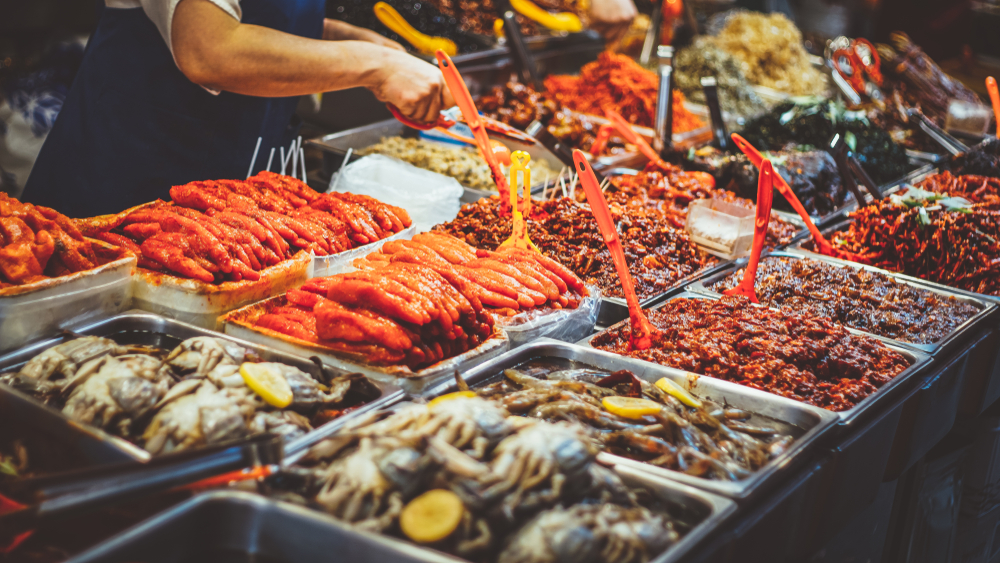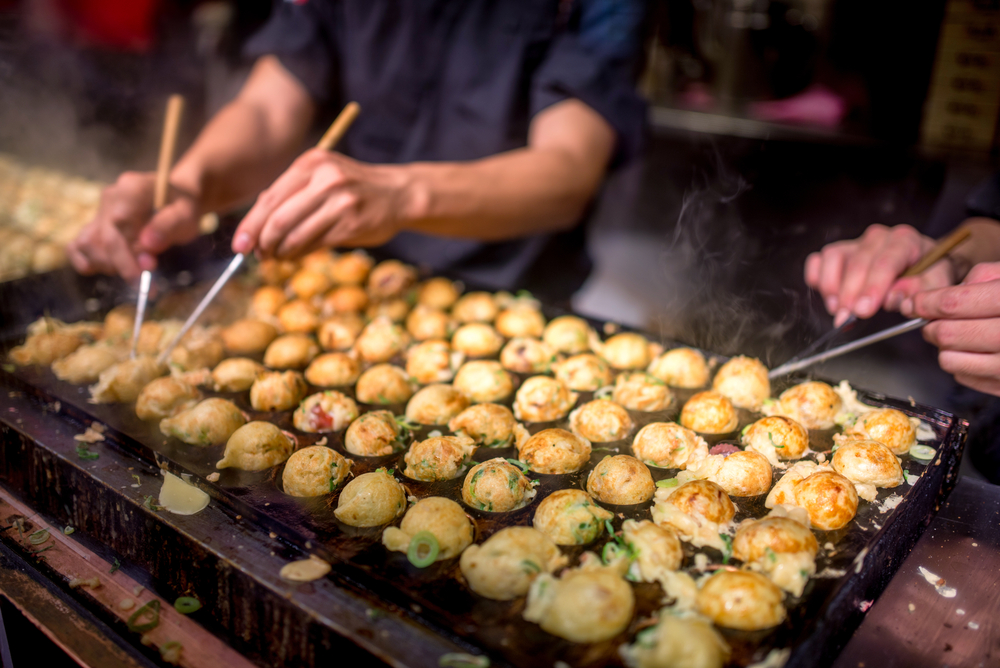Discovering the Flavors of Bangkok Street Food
Introduction to Typical Bangkok Street Eats
Bangkok’s bustling streets throb with a symphony of culinary delights, inviting food lovers to taste the quintessence of Thai cuisine. Traditional Bangkok street eats encompass a rich array of flavors, textures, and aromas, capturing the essence of the city’s vibrant foodie culture. From the aromatic and savory Pad Thai served in heaping portions to the spicy zest of Som Tam (green papaya salad), each bite encapsulates the spirit of Bangkok gastronomy. Locals and travelers alike revel in the inexpensive, accessible treats on offer, with street carts and markets providing a tapestry of taste sensations that range from the sweet coconut-infused desserts like Mango Sticky Rice to the succulent skewers of Gai Yang (grilled chicken). Delving into these typical delicacies is not merely about sating hunger; it’s an immersive journey through Bangkok’s culinary tradition.
What Are the Must-Try Street Foods in Bangkok?
The adventure in Bangkok’s street food paradise isn’t complete without sampling the mosaic of must-try dishes celebrated for their flavors and uniqueness. Moo Ping (grilled pork skewers), succulent and marinated in a blend of spices and coconut milk, beg to be devoured alongside a portion of sticky rice. Another unmissable treat is the fiery and flavor-packed Tom Yum Goong, a hot and sour soup brimming with shrimp, lemongrass, and kaffir lime leaves. For noodle enthusiasts, the soul-warming bowl of Guay Teow (noodle soup) can’t be overlooked, customizable with a choice of meat and spice levels. The streets also whisper tales of Roti, a kind of Thai pancake filled or topped with sweet bananas and drowned in condensed milk, a must for anyone with a sweet tooth.

Where to Find the Best Street Food in Bangkok?
Scouring Bangkok for its best street food is an adventure of its own. The legendary Yaowarat Road, also referred to as Bangkok’s Chinatown, is a goldmine for foodies, sparkling with an array of street vendors serving everything from Peking duck to bird’s nest soup. Ratchawat Market offers an authentic local experience where gourmet dishes like Roast Duck and Ko Moo Yang (grilled pork neck) reign supreme. The famous Khao San Road captivates backpackers with its eclectic mix of Thai staples and Western fusions. For a curated lineup of beloved treats, one should not miss the Victory Monument area, known for its boat noodle alley, where a flavorful bowl of noodles is enjoyed under the buzz of local chatter. Each locale presents its own distinctive flavor of Bangkok street food, promising a palatable odyssey.
Can You Find Vegan Street Food in Bangkok?
The culinary landscape of Bangkok, while seemingly dominated by meat and seafood, offers a surprisingly welcoming array of vegan options. Street food stalls, becoming increasingly conscious of dietary preferences, have started to provide a plethora of plant-based alternatives that retain the authentic Thai flavors. Vegan tourists will find solace in dishes like Pad Thai, easily tweaked to exclude fish sauce and substitute proteins with tofu, or in a spicy plate of Pad Krapow Moo, with minced soy instead of pork. The city celebrates an annual vegetarian festival, known as Jae, during which street vendors mark their stations with yellow flags, signifying a menu free from animal products. Bangkok’s vegan street food scene is a hidden tapestry of flavors waiting to be discovered by those who seek them.
Top Vegetarian Street Food Dishes in Bangkok
For vegetarians meandering through Bangkok’s elaborate maze of street eats, options abound beyond the conventional selections. Famed vegetarian dishes include the hearty Massaman Curry, a coconut milk-based delight studded with potatoes, onions, and peanuts, providing a heartwarming indulgence. Stir-fried morning glory, known as Pad Pak Boong, makes for a simple yet flavorful greens-focused treat, spiced up with a mixture of garlic, chilies, and soy sauce. Tofu-centric dishes, such as the deep-fried Tofu with sweet chili sauce, become instant favorites, and the colorful array of Thai salads, like Larb made with mushrooms instead of minced meat, offer a refreshing bite. Bangkok’s vegetarian street food not only satisfies the palate but also nutritiously fuels the exploration of this dynamic city.
Exploring Seoul’s Vibrant Street Food Culture
The Evolution of Korean Street Food in Seoul
Seoul’s streets echo a rich history of flavors that have evolved over generations, marking the city as a hub for Korean street food innovation. From humble beginnings as sustenance for ordinary folks, street food in Seoul has burgeoned into a cultural hallmark embraced by all societal strata. Vendors once serving simple items like Tteokbokki (spicy stir-fried rice cakes) and Hotteok (sweet stuffed pancakes) have witnessed these classics transform with additions like cheese and gourmet fillings. The city’s rapid modernization has given rise to hybrid delicacies, marrying Korean tastes with international influences, leading to creations like Kimchi-flavored fries and Bulgogi burgers. This culinary evolution mirrors Seoul’s dynamic societal changes and celebrates the timeless tradition of Korean street eats.

What New Street Food Creations Have Emerged in Seoul?
Seoul’s street food scene is a testament to the city’s innovative spirit, and the latest creations to hit the streets reflect a blend of tradition and modern flair. Egg Breads (Gyeran-ppang) continue to evolve, with vendors incorporating new fillings like bacon or cheese. The once-simple fish cakes (Odeng) now come in diverse flavors, often served with a warming broth perfect for Korea’s harsh winters. A quirky mix of Western and Korean influences has also given birth to items like the Korean-style corn Dog, smothered in sugars and sauces, offering a crunchier and more inventive take than its American counterpart. Even Korean fried chicken has taken to the streets, experimenting with a spectrum of glazes and seasonings, ensuring no two bites are identical. These new street food innovations keep the spirit of Seoul’s culinary landscape ever-enticing and offer a constant surprise to the taste buds of locals and travelers alike.
Seoul’s Night Markets: A Hub for Food Adventurers
As the sun sets, Seoul’s night markets buzz to life, becoming meccas for food adventurers seeking the city’s latest and most mouthwatering street eats. Places like the sprawling Dongdaemun Night Market, with its vast array of stalls, satiate nocturnal cravings with everything from seafood pancakes (Haemul Pajeon) to skewered meats. The trendy Myeongdong Night Market offers an eclectic mix of street food to match its fashionable surroundings, where new-age beverages and traditional snacks like Bungeoppang (fish-shaped waffle filled with sweet red bean paste) blend seamlessly. These night markets also offer sensory experiences beyond taste, with a bustling atmosphere where aromas mingle with the sights of sizzling grills and the sounds of haggling and joyous banter. A night market tour is an illuminating beginning for those looking to take a deep dive into the heart of Seoul’s food culture.
A Culinary Journey through Tokyo’s Street Food
Iconic Tokyo Street Food You Can’t Miss
Tokyo’s labyrinthine streets are peppered with street food icons that tell a story of tradition and meticulous craftsmanship. Takoyaki, octopus balls, is a quintessential snack that is practically irresistible; served hot, garnished with delicate shavings of bonito and a drizzle of savory sauce. Another staple is Yakitori, skewered chicken grilled over charcoal, highlighting the Japanese philosophy of simplicity and elegance in food. Sweet tooth’s relish in the warm, fluffy bites of Taiyaki, a fish-shaped cake filled with sweet azuki bean paste. These street food staples are more than mere snacks; they are cultural artifacts, each with a unique origin and a place in the hearts of the Tokyo populace. To truly experience Tokyo’s street food is to delve into a rich culinary heritage that has been fine-tuned to perfection over countless generations.

Busy Pockets of Tokyo with the Best Street Food
Tokyo’s pulsating energy is perhaps most palpable within the bustling pockets of the city known for its incomparable street food offerings. Harajuku’s Takeshita Street tantalizes visitors with trendy treats, from rainbow cotton candy to the latest craze in novelty snacks. In contrast, Asakusa’s historic Senso-ji Temple area provides an atmosphere steeped in tradition, where one can savor classic bites like Ningyo-yaki (small cakes filled with red bean paste). Shibuya is a haven not just for its famous crossing but for its array of food trucks and stalls serving up quick and savory options, like crispy Karaage (Japanese fried chicken). These neighborhoods each offer their own flavor of Tokyo street cuisine, whether it be cutting-edge, traditional, or a fusion of both, reflecting the diversity and innovation that Tokyo’s street food scene is revered for.
How Does Tokyo Ensure Cleanliness in Street Food?
Tokyo’s reputation for cleanliness extends convincingly into its street food culture, with meticulous standards that ensure every corner serving food maintains exceptional hygienic practices. Vendors typically pride themselves on their spotless stalls, with visible areas for handwashing and glove use being commonplace. Food safety regulations in Tokyo are stringent, with regular inspections that rigorously enforce compliance, ensuring that the freshness and cleanliness of ingredients are beyond reproach. Moreover, food is often prepared to order, minimizing the risk of contamination and preserving the quality that Tokyo’s street food is renowned for. These protocols bolster the consumer’s confidence and enhance the overall enjoyment of the street food experience, adding an essential layer of trust between vendor and customer.
Healthy Street Food Alternatives for Diet-Conscious Eaters in Tokyo
Diet-conscious eaters wandering Tokyo’s streets are not left wanting, thanks to various healthy alternatives that fuse nourishment with flavor. For starters, Sushi and Sashimi stalls abound, offering fresh and lean seafood selections that satisfy without weighing down. Edamame, lightly salted and boiled young soybeans, is a snack packed with protein and fiber available at nearly every corner. Visitors can also indulge in Tofu-based dishes like Agedashi Tofu, enjoying the deep-fried pleasures with a lighter nutritional profile. Even traditional sweets can be guilt-free; Mochi, made from rice and often filled with sweetened bean paste, offers a healthier dessert option low in fat. Tokyo demonstrates that street food can be deliciously harmonious with a health-conscious lifestyle, providing plenty of opportunities to eat smart without missing out on the city’s culinary adventures.
Street Food Etiquette and Tips for First-Time Visitors
Respecting Local Traditions and Manners While Enjoying Street Food
As travelers embark on a journey through Asia’s street food scenes, it’s important to respect local traditions and manners that may differ greatly from their own. In Bangkok, greeting vendors with a polite ‘wai,’ a slight bow with palms pressed together is customary. In Seoul, it’s expected to eat your street food on the spot, often standing by the stall rather than walking away with it. Tokyo locals prize order and cleanliness; hence, finding nearby seating or designated eating areas is the norm after purchasing street food. Being mindful of local dining etiquette is courteous and enhances the overall experience, inviting a deeper connection with the food and its cultural significance. By adhering to these subtle but essential customs, visitors can engage more authentically with the rich tapestry of Asian street cuisine.

Essential Tips to Navigate Street Food Markets Like a Local
To truly immerse oneself in the bustling street food markets of Asia, there are a few essential tips to navigate them like a local. Firstly, carrying cash is a must, as many street vendors do not accept card payments. Be observant and take cues from locals; where the lines are longest, the food is often best. Avoid pointing and using gestures when language barriers arise; vendors are typically friendly and eager to serve their culinary creations. Always carry your own tissue or hand wipes, as napkins may not be provided. Being mindful of peak hours can help avoid the rush and afford a more relaxed dining experience. Lastly, be adventurous with your selections; the markets are a playground for the palate, and the rewards are rich for those willing to explore. With these tips in hand, you can navigate street food markets with the savvy of a seasoned local.
How to Spot the Best Street Food Stalls?
Identifying the best street food stalls among a sea of options can be a sensory and intuitive exercise. A trusted indicator is the presence of locals; a stall frequented by native eaters is often a sign of quality and authenticity. The aroma is another giveaway; if the scent of the food compels you to take a closer look, it’s probably worth a try. Visual cleanliness and stall organization are also critical factors, reflecting the vendor’s care for their craft and attention to hygiene. Additionally, look for stalls that specialize in one or two dishes; mastery over a limited menu often translates to exceptionally well-prepared food. Finally, don’t shy away from striking up conversations with locals or fellow food enthusiasts; personal recommendations can lead you to hidden gems and the most memorable culinary experiences.
Tips for Avoiding Common Pitfalls When Eating Street Food
Eating street food is an adventure that comes with its fair share of risks, but with a few prudent measures, you can navigate these culinary waters safely. Always assess the freshness of the food; items that are cooked to order, particularly in high-heat methods like grilling or frying, are generally safer options. Beware of raw dishes or those containing uncooked vegetables, as water quality can vary. Don’t consume items that have been sitting out for an unknown duration, and prioritize busy stalls where high turnover means food doesn’t linger. Drinking bottled water and avoiding ice is also advisable in many areas. If your stomach isn’t used to the local cuisine, start with less adventurous choices and gradually explore more complex flavors. By taking these precautions, the vibrant world of street food can be enjoyed to its fullest without the worry of common pitfalls.
Pairing Drinks with Asian Street Food for an Enhanced Experience
Local Beverages to Complement Your Street Food in Bangkok, Seoul, and Tokyo
The gastronomic experience of Asian street food is further elevated when paired with the right local beverage. In Bangkok, a glass of refreshingly sweet Thai Iced Tea can offer a cooling reprieve from the city’s heat, complementing the spiciness of Thai dishes. Seoul’s vibrant concoctions, such as the traditional rice drink Sikhye, with its subtle sweetness and malted barley base, contrast beautifully with the bold flavors of Korean street fare. In Tokyo, nothing washes down a casual street-side meal quite like an Asahi Super Dry beer or a cup of Green Tea, tying together any Japanese food experience with its venerable beverage counterparts. Whether with an alcoholic tipple or a non-alcoholic refreshment, indulging in local drinks adds an integral layer of cultural immersion and taste satisfaction to the street food encounter.
What to Drink with Spicy, Savory, or Sweet Street Food?
The diverse flavor profiles of Asian street food demand thoughtful pairings to enhance each indulgent bite. For fiery or spicy dishes that set the palate ablaze, consider soothing drinks such as Yakult or cold Soymilk to temper the heat. When tucking into rich, savory treats, a fizzy, sweet soda or tangy Aloe Vera drink can cleanse the palate and balance the heartiness. Sweet snacks like Ais Kacang in Bangkok, or Hotteok in Seoul, pair delightfully with bitter teas or black coffee, which can cut through the sweetness and refresh the senses. No matter the selection, the pairing of beverages with your street food of choice is a delightful exploration in harmony and contrast, with the power to transform a good meal into an unforgettable culinary symphony.
Experiencing the Nightlife and Street Food Scenes Combined
The convergence of nightlife and street food scenes offers an exhilarating window into the social and culinary fabric of Asian cities. Bangkok thrives after dark with spots like Sukhumvit Soi 38, where savory midnight snacks and cocktails fuse in a lively atmosphere. Seoul’s Hongdae district pulses with youthful energy, supplying a myriad of food options alongside the quintessential Korean tipple, Soju. Tokyo’s Shinjuku area dazzles visitors with Izakaya alleyways, where frosty mugs of beer complement skewered delights and bustling conversations. These destinations are not just places to eat and drink; they are social arenas where food, beverage, and the nocturnal hum of the city interlace to create memories that linger far beyond the final sip and bite.
FAQs About Asian Street Food in Bangkok, Seoul, and Tokyo
What are the Top 3 Street Foods to Try in Bangkok, Seoul, and Tokyo?
Embarking on a street food journey across Bangkok, Seoul, and Tokyo, there are top picks that stand out as must-tries for any culinary explorer. In Bangkok, Pad Thai reigns supreme, offering a tantalizing combination of noodles, peanuts, and fresh lime. Street food connoisseurs should not miss Seoul’s Tteokbokki, a beloved dish featuring chewy rice cakes in a spicy-sweet sauce. In Tokyo, the delicate and savory bite-size Sushi served on the go is not only an art form but a quick and delicious treat that captures the essence of Japanese cuisine. Each dish represents the soul of its respective city, providing eaters with an authentic taste of the local culture and culinary expertise.
How Do I Avoid Food Allergies When Trying Asian Street Foods?
Navigating food allergies while sampling street food in Asia requires vigilance and preparation. It’s wise to learn and write down the names of certain ingredients in the local language to communicate any allergies to vendors effectively. Carrying allergy cards that explain your condition in detail can also be a lifesaver. Opt for dishes where you can clearly identify all ingredients, and when in doubt, don’t hesitate to skip a meal. Consider visiting street food stalls during off-peak hours when vendors are less busy and more likely to cater to your specific needs. Lastly, always carry any necessary medication, such as antihistamines or epinephrine injectors, for peace of mind while enjoying the vibrant street food culture.
Are There Any Street Foods Suitable for Children in These Cities?
Yes, Asian cities offer a wide array of street foods that are not only suitable but delightful for children. Bangkok has sweet and mild options like Satay, skewered and grilled meats with a side of sweet peanut sauce, a definite kid pleaser. In Seoul, children are drawn to Gimbap, essentially Korean sushi rolls that are easy to eat and often filled with vegetables and ham. Tokyo’s Tamagoyaki, a slightly sweet, rolled omelet, is both nutritious and a favorite among younger palates. These street foods not only satisfy younger tastes but also provide a convenient way for families to enjoy a meal together while exploring the bustling streets of these vibrant cities.
What is the Average Cost of Street Food in Bangkok, Seoul, and Tokyo?
The average cost of street food varies greatly among Bangkok, Seoul, and Tokyo, reflecting the cost of living and local economic conditions. In Bangkok, street food items can range from as little as 20 THB to about 150 THB, offering an incredibly affordable dining option. Seoul’s street food prices are slightly higher, averaging around 2,000 KRW to 5,000 KRW for most items, but still providing good value. Tokyo has a higher price point, with street food costing anywhere from 300 JPY to 600 JPY on average; certain specialty items may command higher prices. Despite these differences, street food remains a cost-effective way to sample a variety of local flavors across these three captivating cities.
